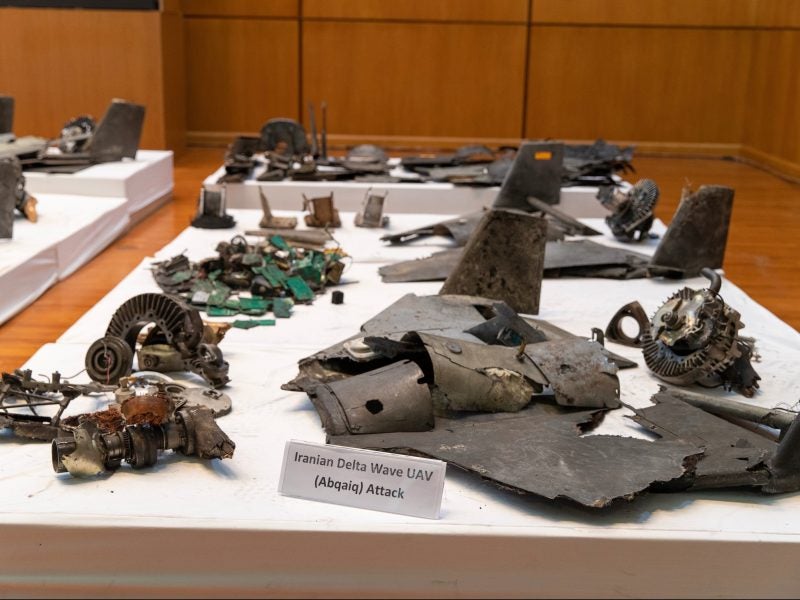
A spokesperson for the Saudi Arabian Ministry of Defence has said the attack that saw oil facilities across the kingdom targeted by unmanned aerial vehicles and cruise missiles was “unquestionably sponsored by Iran”.
The kingdom did not specify from where the attack originated but said it believes the source of the attacks was from the north due to the flight paths of the drones and their range. The spokesperson added that the attacks “couldn’t have originated in Yemen”.
Saudi Arabia has around six battalions of US-developed Patriot surface-to-air missile defence systems, which can detect and destroy targets.
The attack, claimed by Houthi rebels in Yemen, saw 18 UAS and seven cruise missiles launched at two oil facilities in Saudi Arabia. The Saudi military spokesperson said the missile fragments collected matched the newly-unveiled Iranian Ya-Ali cruise missile which has a range of 700km.
According to Saudi Arabia, the UAS and cruise missiles used were allegedly manufactured by Iran and the attack was carried out by proxy.
The attack has raised questions about the kingdom’s air defences, which despite heavy investment failed to intercept the aerial attack before they struck their targets.

US Tariffs are shifting - will you react or anticipate?
Don’t let policy changes catch you off guard. Stay proactive with real-time data and expert analysis.
By GlobalDataThe Saudi government has invested heavily in air defence systems since the 1990 Gulf War, though the system may have failed due to cruise missiles and UAS being able to fly closer to the ground and below radar aimed at detecting aircraft.
Patriot missile air defence systems can strike low-flying objects, but they are primarily designed to defend areas from attacks originating from higher altitudes.
Professor of international relations at the University of Illinois and author of ‘Drones and Terrorism’ Nicholas Grossman told Air Force Technology: “If the Saudi military wanted to shoot down some small drones, it wouldn’t be hard. They didn’t, because they didn’t know about the attack until it happened.”
Saudi Arabia has yet to reveal details of any defence systems in place at its oil facilities.
Grossman added: “When a drone swarm attacked a Russian base in Syria in January 2018, the Russians were able to stop it.”
Grossman explained however that the costs of widely deploying anti-air measures to defend against UAV attacks were ‘prohibitive’.
Iran has denied it was the source of the attack, with the Saudi spokesperson telling reporters that evidence collected had been passed on to the UN and Saudi Arabian allies, almost certainly including the US.
According to Saudi Arabia, the design of the UAS and cruise missiles recovered from the attacks match those developed by Iran; the kingdom showed recovered UAS parts during its press conference.
With the attacks originating allegedly from the ‘north’ of Saudi Arabia, given the range of cruise missiles, possible origins for the attack include from Iran itself or Iraq. Three of the seven cruise missiles fired fell short of their targets, with their direction of ground impact being used as evidence for the possible origin of the attack.
The spokesperson said: “We have a lot of ways and methods to determine the launch point,” although he did not specify what they may be.
Before the press conference Iran’s President Hassan Rouhani said that the US was pushing Iran too far.
Rouhani said: “I am telling the American authorities that it is impossible to negotiate with maximum pressure and that if you are truthful and seek to negotiate, all pressure must be stopped against Iran.”
In response to the attacks, US President Donald Trump announced on Twitter today that the US would impose new sanctions on Iran, saying: “I have just instructed the Secretary of the Treasury to substantially increase Sanctions on the country of Iran!” (sic).



